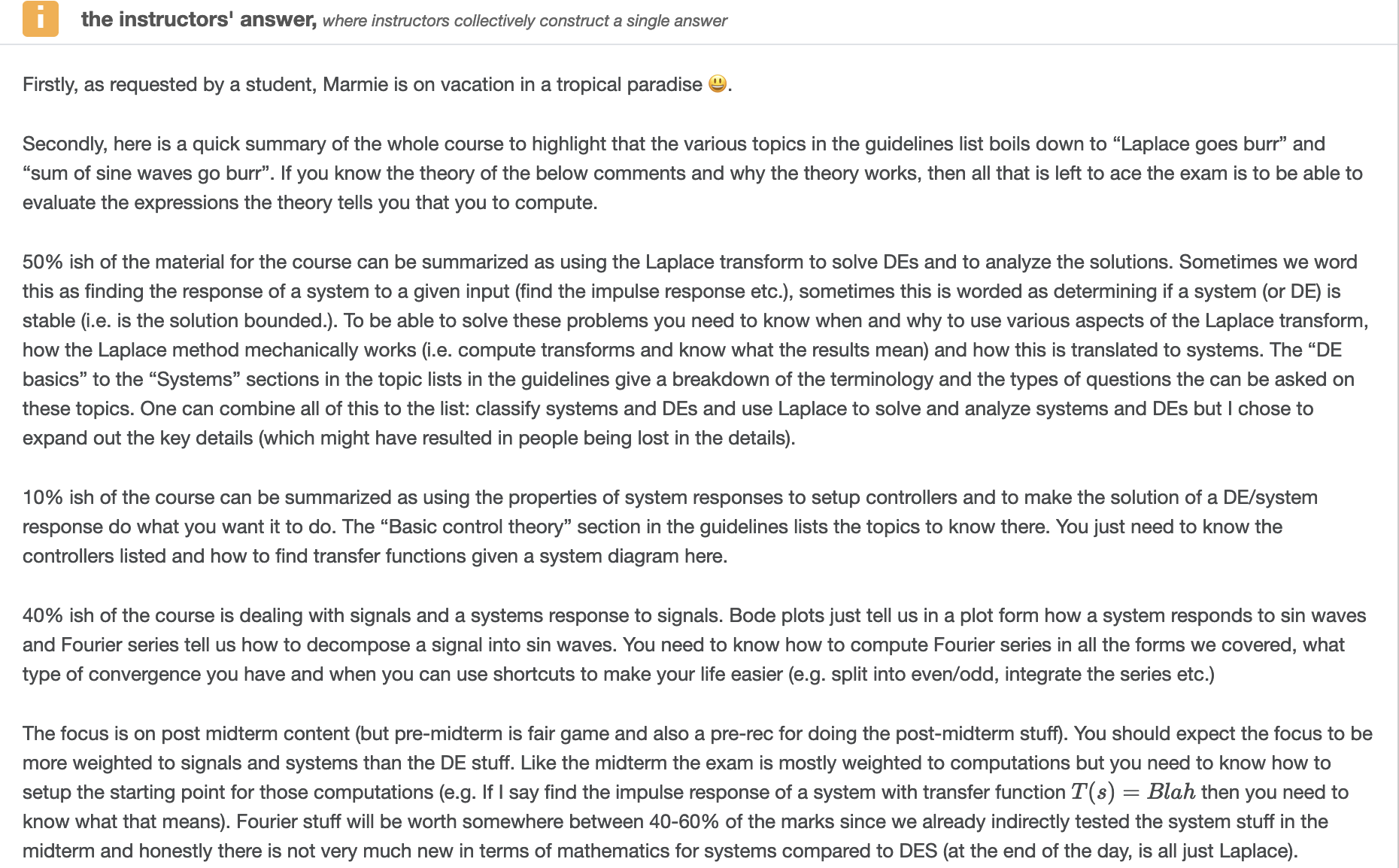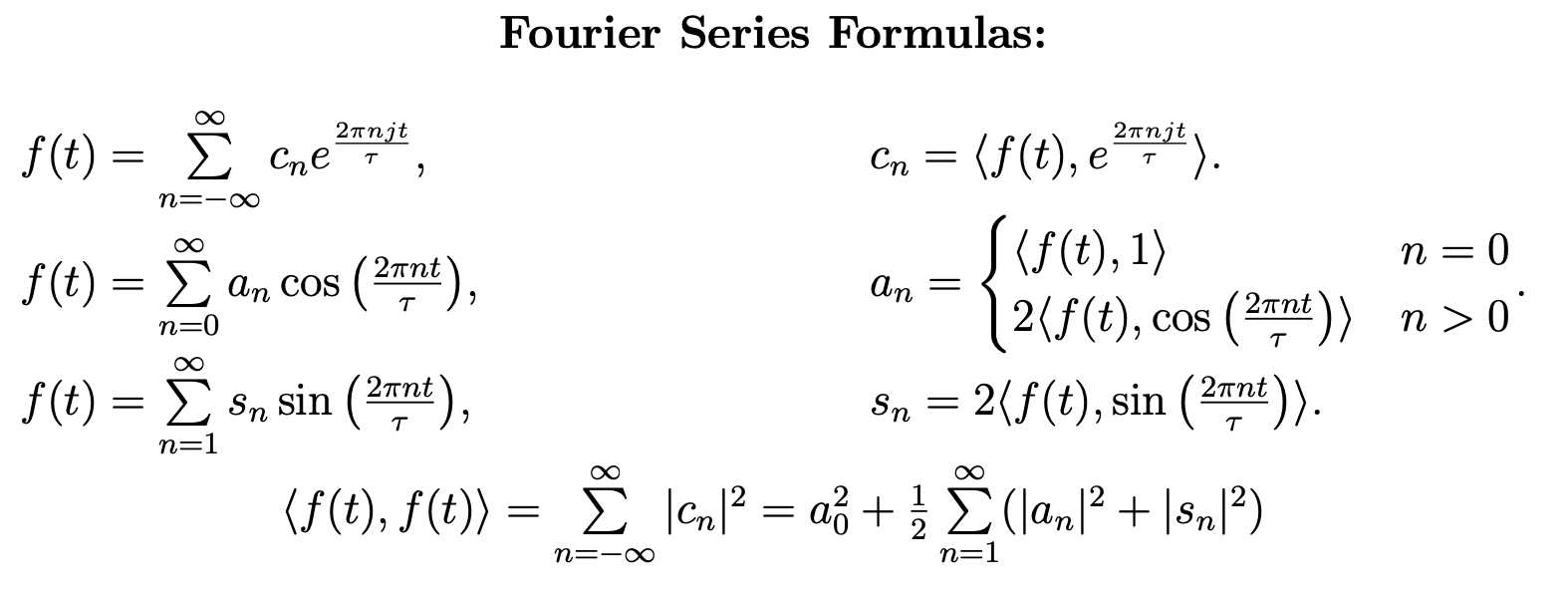Final MATH213
There is literally no time…
What to do:
- Finish all Lectures
- Do tutorial problems 6-10
- ~~Redo Midterm (real fast)
- Redo later Assignments, starting from Assignment 3 to 6

- 50% ish of the material for the course can be summarized as using the Laplace transform to solve DEs and to analyze the solutions. Sometimes we word this as finding the response of a system to a given input (find the impulse response etc.), sometimes this is worded as determining if a system (or DE) is stable (i.e. is the solution bounded.). To be able to solve these problems you need to know when and why to use various aspects of the Laplace transform, how the Laplace method mechanically works (i.e. compute transforms and know what the results mean) and how this is translated to systems. The “DE basics” to the “Systems” sections in the topic lists in the guidelines give a breakdown of the terminology and the types of questions the can be asked on these topics. One can combine all of this to the list: classify systems and DEs and use Laplace to solve and analyze systems and DEs but I chose to expand out the key details (which might have resulted in people being lost in the details).
- 10% ish of the course can be summarized as using the properties of system responses to setup controllers and to make the solution of a DE/system response do what you want it to do. The “Basic control theory” section in the guidelines lists the topics to know there. You just need to know the controllers listed and how to find transfer functions given a system diagram here.
- 40% ish of the course is dealing with signals and a systems response to signals. Bode plots just tell us in a plot form how a system responds to sin waves and Fourier series tell us how to decompose a signal into sin waves. You need to know how to compute Fourier series in all the forms we covered, what type of convergence you have and when you can use shortcuts to make your life easier (e.g. split into even/odd, integrate the series etc.)
